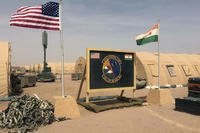American troops in Afghanistan face a very different enemy than the one they encountered in Iraq. The single biggest difference: insurgents in Afghanistan will stand and fight. The Taliban and other insurgent groups display good small unit tactics, with sophisticated synchronization of direct and indirect fire and fire and maneuver, all hallmarks of a seasoned and well trained enemy, says Col. Robert Forrester, director of the Center for Army Lessons Learned (CALL).
“We’ve got to remember that this enemy is experienced,” Forrester said, “this is a warrior culture.” The U.S. military has been fighting for going on eight years and considers itself combat seasoned. Some fighters in Afghanistan, certainly tribal elders, have been battling a range of enemies, from a global superpower to rival militias, nonstop for nearly thirty years. “They are very resourceful, they are very adaptive they are willing to stand toe-to-toe with you and fight it out at the small unit, light infantry level,” Forrester said.
Forrester discussed with reporters on a conference call yesterday a new manual just released by CALL, 09-37, Small Unit Operations in Afghanistan, that compiles specific observations and lessons learned at small unit - that is platoon and company - level.
The manual has been tailored to prepare soldiers for the unique battlefield conditions encountered in Afghanistan, including: intermittent radio and satellite communications that can be hindered by high mountains; physical fitness as a major priority and how to prepare soldiers for operating at high altitudes; ensuring that every soldier is able to operate every weapon in the unit; how to call for close air support and fire support; medical training; patrolling and fortifying patrol bases. The manual goes into considerable detail on establishing security for remote combat outposts, in light of lessons learned from the bloody insurgent attack on a U.S. outpost in Wanat last year.
Afghanistan is extremely decentralized, hence so is the enemy, so U.S. troops can expect to encounter different styles of fighting depending on the area where they operate and the specific tribe or insurgent group they’re fighting.
The Army is struggling to counter insurgent IED attacks, the single biggest killer of U.S. troops in Afghanistan. Forward deployed evaluation teams there immediately feed any new enemy tactics encountered back to the service’s combat training centers in the U.S.
Afghanistan’s rural and mountainous terrain drives insurgents IED tactics. They take advantage of natural defiles, how the roads are built with large drainage ditches on each side and thousands of culverts, “which are ready made IED emplacing areas,” Forrester said. As for triggering, Afghan insurgents use much more command wire detonation versus wireless signal triggering, which was common in Iraq.








